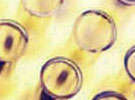Nephrotic Syndrome Diagnosis
To confirm the nature of the disease as well as to know to what extent it has damaged the kidneys, the physician will take the following steps:
01 History:
The doctor will take note of the chief complaints of the patient. Through the history, the doctor will gather more data about one’s symptoms, prior history or family history of allergy or related diseases, and other related complaints. In most cases, a detailed and precise history gives definite intimation to the diagnosis.
Following this doctor will proceed with a physical examination.
02 Physical examination:
1. The most common clinical finding in all patients with Nephrotic Syndrome is edema, which is present in more than 95% of individuals with the condition. When mild, edema is localized to those tissues, which are lax and can lead to fluid accumulation very easily (e.g., around the eyes, scrotum, labia).
Generalized edema is dependent (increasing and decreasing with gravity) and pitting (impressionable to touch) in character. Ascites are common, and generalized swelling may be present. In children with marked ascites, mechanical restriction of breathing may be present, and the child may have compensatory tachypnea (fast, shallow breathing).
2. Hypertension may be present in the majority of patients with any form of NS.
3. Other positive findings, which may not be present in each and every case of Nephrotic Syndrome, are as follows:
- Signs of a concurrent upper respiratory tract infection may be present and some children have overt evidence of an atopic state with varying degrees of eczema.
- An occasional child demonstrates evidence of an insect sting and/or bite.
- Abdominal tenderness will be evident in presence of peritoneal infection.
03 Investigations:
In addition to a physical examination and the assessment of health history, the following three tests are instrumental for accurate diagnosis:
- Urinalysis
- Blood analysis
- Kidney biopsy
1. Urinalysis is done to demonstrate the seepage of proteins in the urine. Evaluation of the urine by a simple urine dipstick test gives preliminary information on the amount of protein in the urine. For this, your doctor will dip a strip of chemically treated paper into the urine sample. Too much protein in the urine will make the paper change color. This test can be done in the clinic itself.
In order to determine the exact amount of proteins in the urine, a 24-hour quantitative test may be ordered. For this, the urine is collected over a period of 24 hours and the amount of protein in the urine is measured.



The magnitude of proteinuria varies with the state of disease activity and a variant of Nephrotic Syndrome. Some highlights of this test are:
- The amount of protein in a random urine sample of a patient with NS usually exceeds 100 mg/dL, and values as high as 1000 mg/L are common.
- The major protein excreted in any form of NS is albumin.
Another positive finding in the urinalysis can be the presence of blood in the urine and its frequency depends on the subtype of NS.
2. Blood analysis often shows high cholesterol levels and low albumin.
Hypoalbuminemia is the second of the cardinal laboratory features of NS. The concentration of serum albumin in a patient with Nephrotic Syndrome is less than 2.5 g/dL.
Hyperlipidemia is a common feature of NS and, in general, correlates inversely with the concentrations of serum albumin. The low-density lipoprotein and very-low-density lipoprotein cholesterol concentrations are elevated, whereas the high-density lipoprotein cholesterol level is decreased.
The doctor may take a blood sample to see how well the kidneys are removing waste. Healthy kidneys remove creatinine and urea nitrogen from the blood. If the blood contains high levels of these waste products, some kidney damage may have already occurred.
3. Kidney biopsy: In some cases, the doctor may want to examine a small piece of the patient’s kidney under a microscope to determine the underlying cause and extent of the disease. The procedure of collecting a small tissue sample from the kidney is called a biopsy, and it is usually performed with a long needle passed through the skin after the patient lies flat on his/her stomach. The doctor will use an ultrasound scan to find out exactly where the kidneys are and where to insert the needle. The procedure is more uncomfortable than painful and only a very small sample of one kidney is removed using a special needle. The sample is then examined under the microscope and it may take several days before the answer is available. The individual will be awake during the procedure and receive calming drugs and a local painkiller at the site of the needle entry. General anesthesia is used in very rare cases where open surgery is required. The patient may be able to go home on the same day or may stay overnight in the hospital to rest and allow the health care team to ensure that no problems occur.
04 Imaging Studies:
- No routine imaging studies are indicated in patients with NS.
- On chest radiographs, pleural effusions (collection of fluid in the membranous covering of lungs) are not uncommon and their presence correlates directly with the degree of edema and indirectly with the serum albumin concentration. Ascites is common.
- Renal sonography usually reveals normal to slightly enlarged kidneys. Patients with MPGN often demonstrate larger than normal renal shadows.
Written & Approved by-
Dr. Rajesh Shah
M.D. (Hom.)